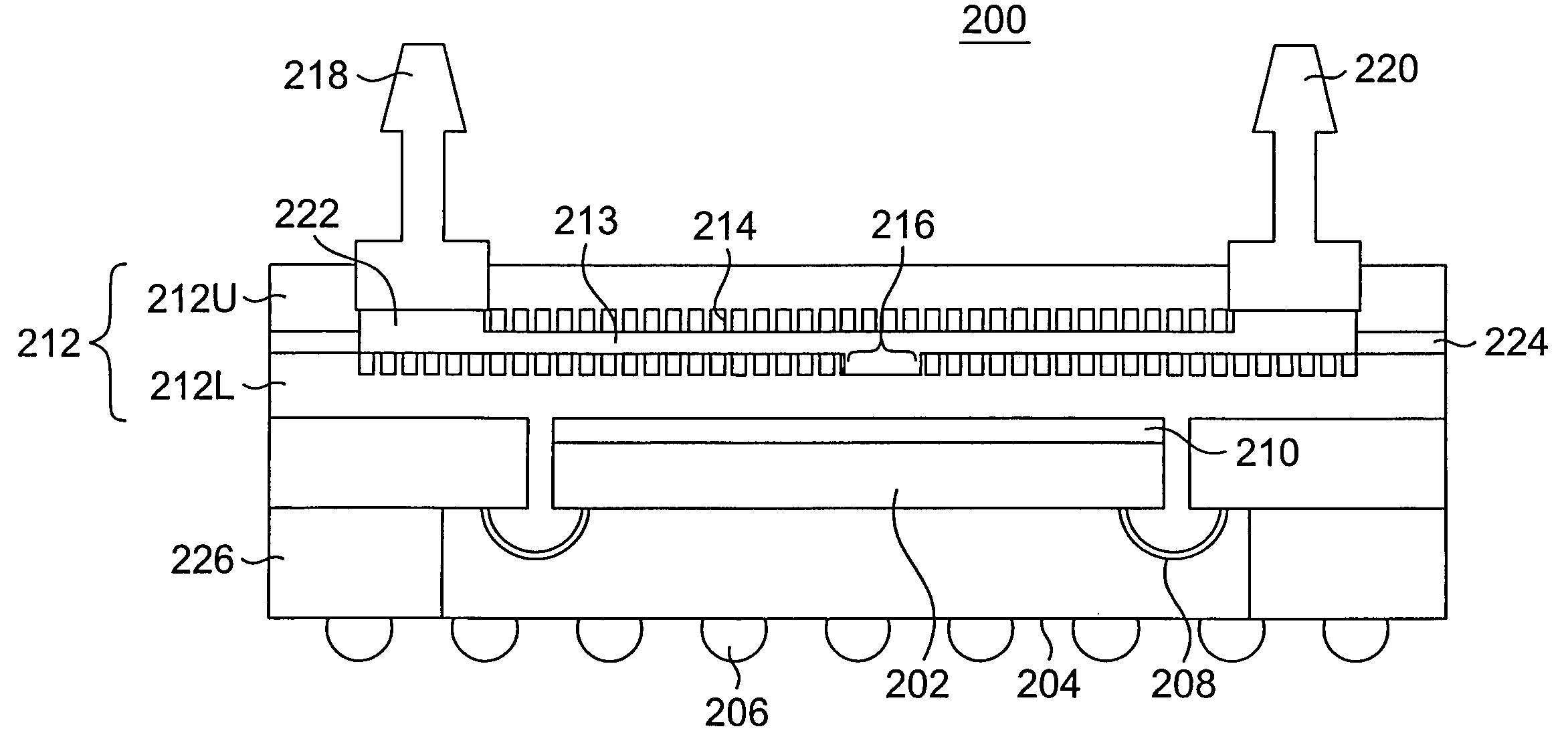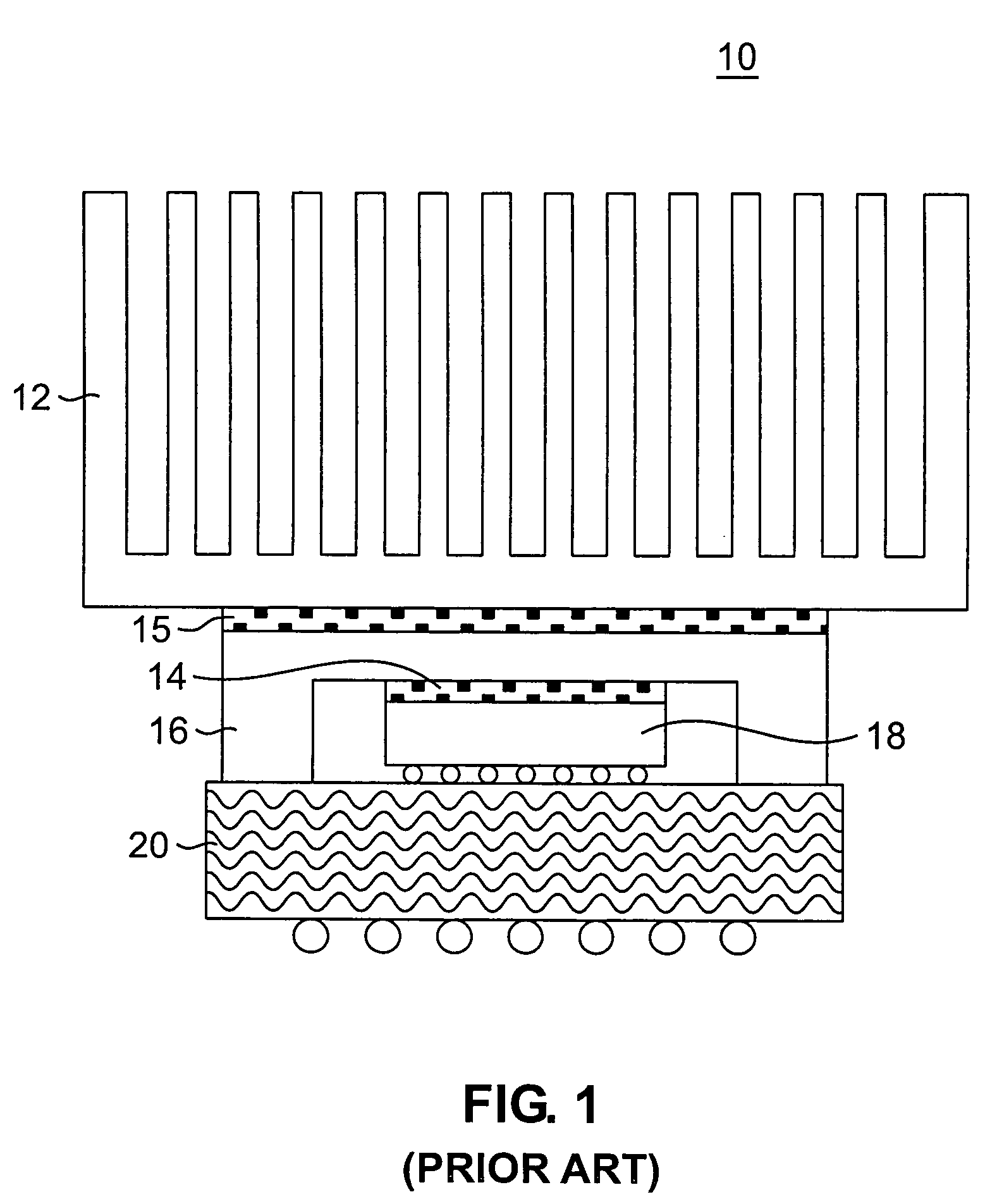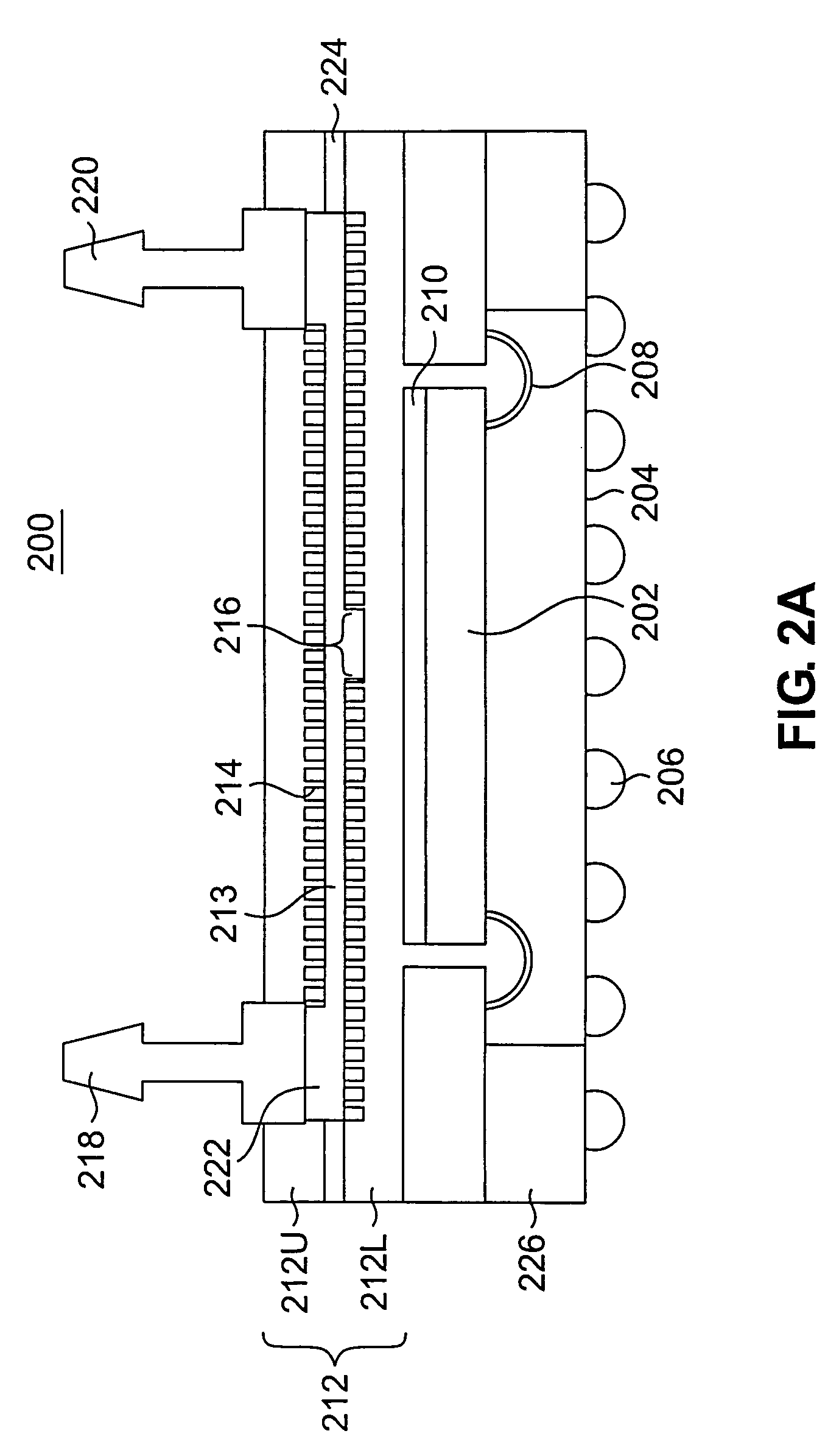Techniques for microchannel cooling
a technology of microchannels and cooling pipes, applied in the direction of laminated elements, lighting and heating apparatus, semiconductor/solid-state device details, etc., can solve the problems of fundamental limits to the amount of heat that a heat pipe of a given geometry can transport, and the inability to exploit the advancement, so as to reduce the pressure drop and adjust the efficiency of heat transfer
- Summary
- Abstract
- Description
- Claims
- Application Information
AI Technical Summary
Benefits of technology
Problems solved by technology
Method used
Image
Examples
Embodiment Construction
[0019]Prior to describing the inventive aspects and features of the present techniques, a conventional heat-transfer device will first be described. FIG. 1 is a diagram illustrating a conventional heat-transfer device. As shown in FIG. 1, conventional heat-transfer device 10 comprises heat sink 12, thermal interface materials (TIMs) 14 and 15, heat spreader 16, integrated circuit (IC) die 18 (heat source) and ball grid array (BGA) substrate 20. Such a heat-transfer device may comprise, by way of example, a central processing unit (CPU) of a personal computer (PC).
[0020]Heat spreader 16 may comprise a block of high thermal conductivity material, including, but not limited to, copper or an alloy thereof. Alternatively, heat spreader 16 may comprise a vapor chamber. A vapor chamber is a flat, hollow plate with internal structures that make it function like a heat pipe. For example, with the highest power devices, e.g., outputting 100 Watts or greater, heat spreader 16 may be constructe...
PUM
| Property | Measurement | Unit |
|---|---|---|
| temperature | aaaaa | aaaaa |
| length | aaaaa | aaaaa |
| thickness | aaaaa | aaaaa |
Abstract
Description
Claims
Application Information
 Login to View More
Login to View More - R&D
- Intellectual Property
- Life Sciences
- Materials
- Tech Scout
- Unparalleled Data Quality
- Higher Quality Content
- 60% Fewer Hallucinations
Browse by: Latest US Patents, China's latest patents, Technical Efficacy Thesaurus, Application Domain, Technology Topic, Popular Technical Reports.
© 2025 PatSnap. All rights reserved.Legal|Privacy policy|Modern Slavery Act Transparency Statement|Sitemap|About US| Contact US: help@patsnap.com



